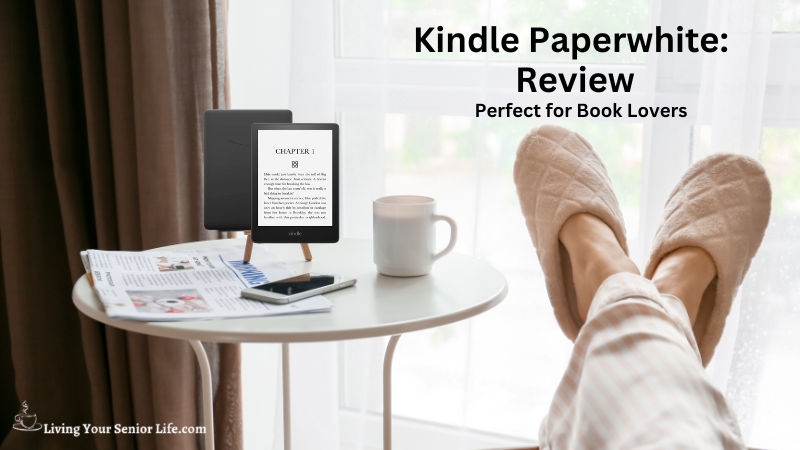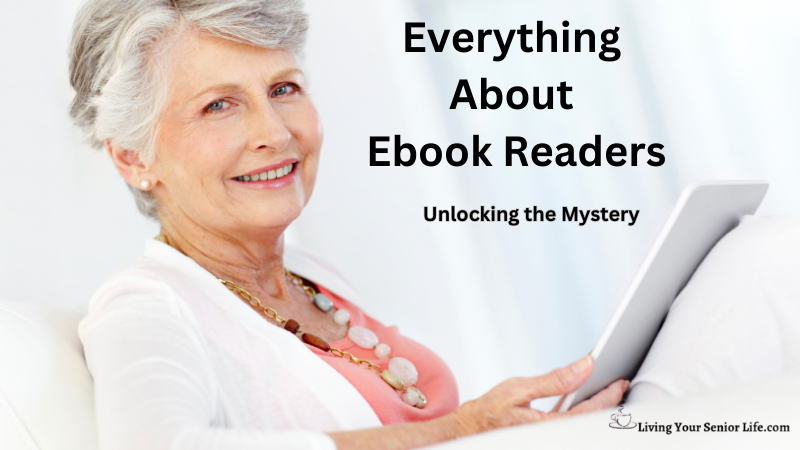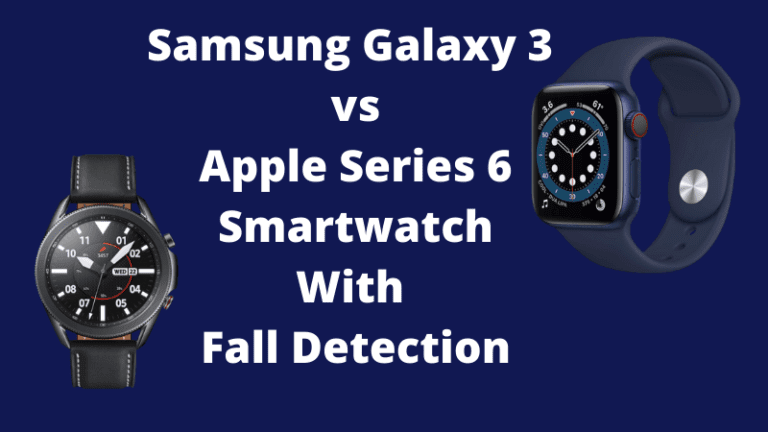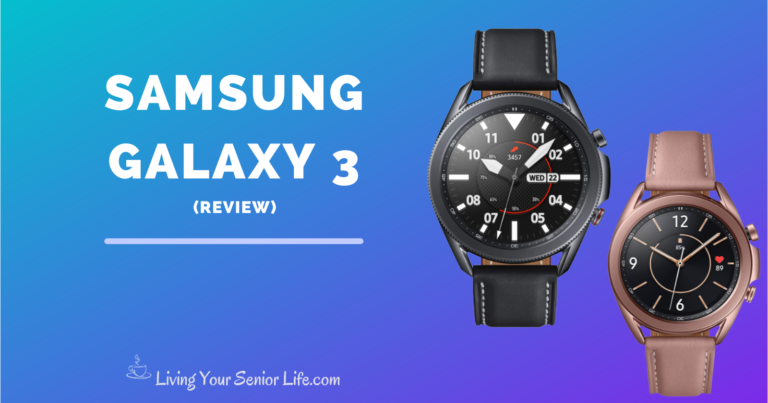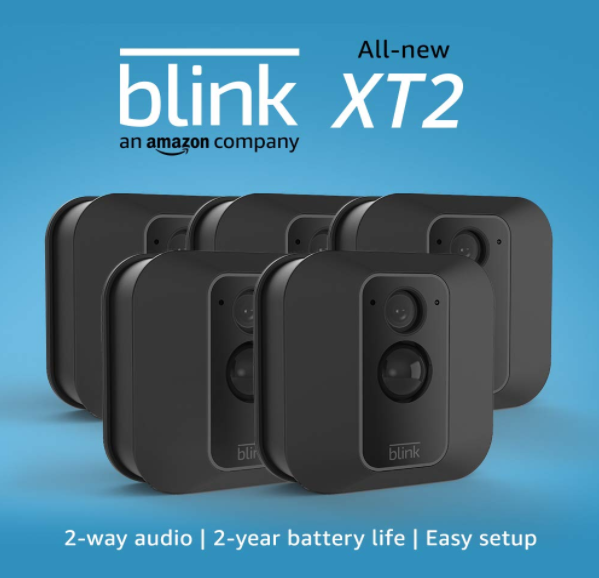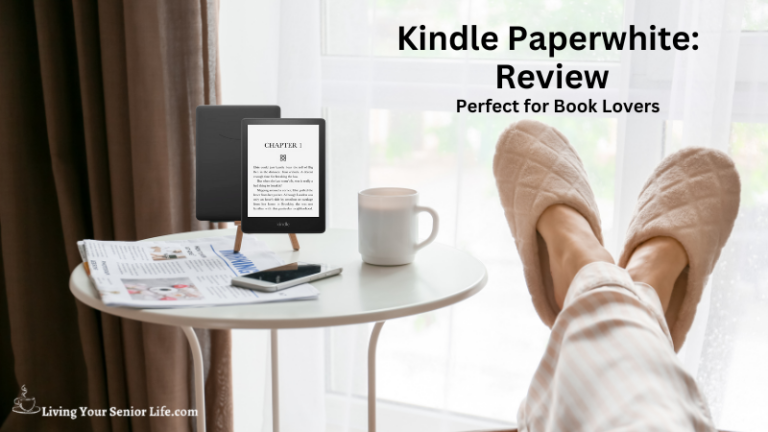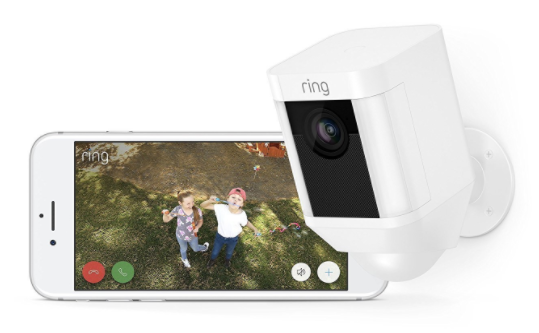As a senior, choosing between e-readers vs. physical books can be a difficult decision. While both options offer unique benefits, it ultimately comes down to personal preference. In this article, we will explore the pros and cons of each option, helping you make an informed decision that best suits your reading preferences and lifestyle.
In this article, we delve into the pros and cons of e-readers and physical books for seniors, helping you make an informed decision that best suits your reading preferences and lifestyle. We’ll explore the unique benefits each option offers, from the adjustable settings and portability of e-readers to the tactile experience and reduced eye strain associated with physical books.
Whether you’re a senior reader wondering whether to go digital or stick with traditional books or if you’re someone looking to gift the perfect reading medium to a senior loved one, this article is for you. Let’s embark on this journey to discover the ideal reading solution for seniors.
Key Takeaways:
- The decision to choose between e-readers and physical books ultimately comes down to personal preference.
- E-readers offer features like adjustable font sizes, built-in dictionaries, and the ability to highlight and take notes, while physical books can be read anywhere and don’t require a battery or an internet connection.
- When deciding between e-readers and physical books, it’s important to consider factors such as personal preferences, environmental and health impacts, and social and cultural considerations.
What is an E-reader?
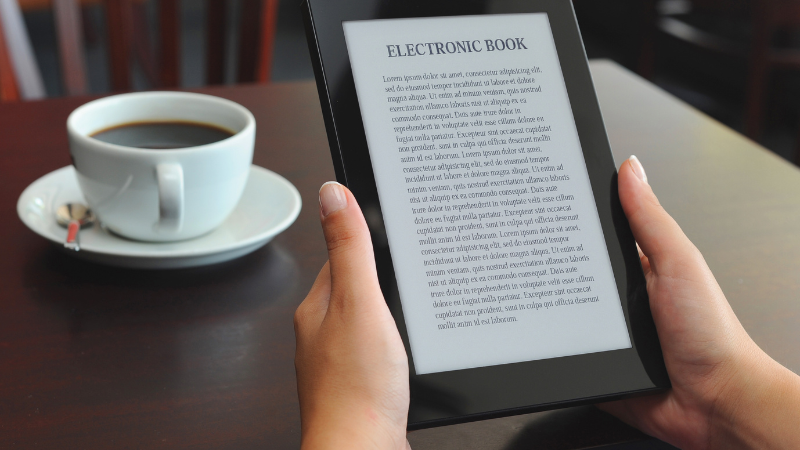
An e-reader, also known as an electronic reader or e-book reader, is a portable digital device designed for reading electronic books, magazines, newspapers, and other digital publications. E-readers utilize electronic ink technology to display text and images on a screen that mimics the appearance of ink on paper. This technology allows for a more natural reading experience and reduces eye strain.
E-readers offer several functionalities such as adjustable font sizes, built-in dictionaries, and note-taking capabilities to enhance the reading experience. They also typically offer a vast selection of e-books that can be downloaded, stored, and accessed conveniently on the device.
One of the most popular e-readers is the Kindle, developed by Amazon. However, there are several other e-readers available on the market, including the Nook and Kobo. E-readers have gained popularity for their portability, ability to store thousands of books in one device, and customizable reading settings to enhance the reading experience for users of all ages, including seniors.
Overall, e-readers provide a convenient and practical way to read digital books and publications on electronic devices.
Video: E-Readers vs Physical Books
Benefits of E-readers for Seniors

E-readers offer several benefits for seniors, making them an excellent alternative to physical books. Here are some of the advantages of using e-readers:
Convenience
One of the most significant advantages of e-readers is their convenience. With an e-reader, you can carry thousands of books with you wherever you go, without having to worry about the weight or bulk of physical books. This makes e-readers a great option for travelers or anyone who wants to read on-the-go.
Cost
While e-readers can be expensive upfront, they can save you money in the long run. E-books are often cheaper than physical books, and many classic books are available for free online. However, if you prefer to buy new releases or hardcovers, physical books may be the more cost-effective option.
Adjustable Reading Settings
E-readers offer a remarkable advantage for seniors with visual impairments or difficulty reading small text. These devices allow users to adjust the font size, font style, and spacing according to their preferences. With just a few taps, seniors can enjoy larger, clearer text that makes reading easier and more enjoyable.
Lightweight and Portable
One of the key advantages of e-readers is their lightweight and compact design. For seniors who love to read on the go, this means no more lugging around heavy bags filled with physical books. With an e-reader, you can carry an entire library in your hands, allowing for easy access to a variety of books wherever you are.
Enhanced Reading Features
E-readers come packed with features that can enhance the reading experience for seniors. Built-in dictionaries enable quick word look-ups while highlighting and note-taking functions make it easy to mark important passages or jot down thoughts. Additionally, some e-readers offer text-to-speech options, allowing seniors to listen to the content instead of reading it, which can be beneficial for those with reading difficulties or visual impairments.
Highlighting and Note-Taking
One of the most significant benefits of e-readers is their ability to highlight and take notes. With e-readers, you can easily highlight passages and take notes without damaging the book. This feature is particularly useful for students, researchers, and anyone who needs to refer back to specific sections of a book.
Accessibility Options
E-readers prioritize accessibility, offering various options that cater to seniors with disabilities. Text-to-speech functionality enables the device to read aloud the content, aiding those with visual impairments or reading difficulties. High contrast settings and screen magnification further enhance readability, ensuring that seniors can comfortably enjoy their reading experience.
Instant Access to E-Books
Another advantage of e-readers is their ability to instantly access and download e-books. With an e-reader, you can purchase and download a book within seconds, regardless of your location. This feature is particularly useful for travelers, people who live in remote areas, or anyone who wants to start reading a book immediately.
Multimedia and Interactivity
E-readers also offer multimedia and interactivity features that physical books cannot match. For example, some e-readers offer audiobook features, which allow you to listen to books while driving, exercising, or doing other activities. Additionally, some e-readers offer interactive features such as quizzes, games, and social media integration, which can enhance the reading experience. Physical books, on the other hand, offer a more traditional and straightforward reading experience, without any distractions or interruptions.
In summary, e-readers offer several benefits for seniors, including convenience, cost-effectiveness, adjustable reading settings, lightweight and portable design, enhanced reading features, highlighting and note-taking capabilities, accessibility options, instant access to e-books, and multimedia and interactivity features.
Advantages of Physical Books for Seniors

Tactile Experience
One of the main advantages of physical books for seniors is the tactile experience they provide. The sensory experience of holding a book, feeling the weight of the book, and turning the pages can create a sense of connection and enhance overall reading enjoyment. This familiarity can also bring back cherished memories, making the reading experience more enjoyable.
Reduced Eye Strain
Physical books can be less straining on the eyes compared to reading from screens. For seniors who may already experience eye fatigue or strain, this can be a significant advantage. Physical books offer a gentler reading experience, allowing you to immerse yourself in the story without worrying about eye discomfort.
No Technological Barriers
Physical books eliminate any technological barriers, providing a straightforward and familiar reading experience. This can be an advantage for seniors who prefer simplicity or are less comfortable with digital devices. Unlike e-readers, physical books do not require any special skills or knowledge to operate, making them a reliable and accessible option.
Sharing and Borrowing
Physical books hold a unique social aspect that e-readers can’t replicate. Seniors can share their favorite books with friends, family, or fellow book lovers. They can also borrow books from libraries, fostering a sense of community and facilitating social interactions. Physical books create opportunities for discussions, recommendations, and the joy of passing on stories to others.
Overall, physical books offer a reliable, sensory, and social reading experience for seniors. They provide a tactile experience, reduce eye strain, eliminate technological barriers, and offer the opportunity to share and borrow books.
Environmental and Health Impacts
Eco-Friendly Choices
When it comes to the environment, both physical books and e-readers have their advantages and disadvantages. E-readers are often considered more eco-friendly because they help reduce deforestation and greenhouse gas emissions from paper production and transportation. However, they require rare earth metals and other materials that are not easily recyclable. According to one source, producing a single e-reader requires the extraction of nearly 33lb of minerals and uses about 79 gallons of water.
On the other hand, physical books can be made from recycled paper and are biodegradable, which means they won’t sit in a landfill for centuries. However, the production and transportation of physical books have a larger carbon footprint than e-books. According to one study, the paper versions of all the titles on an e-reader weigh more than a tablet and take up much more space in delivery vehicles traveling from printing facilities to bookstores.
Reading and Eye Health
When it comes to reading and eye health, e-readers are often considered the better choice. E-readers use e-ink technology, which reduces eye strain and makes it easier to read in low light conditions. Additionally, e-readers allow you to adjust the font size and style to suit your needs. This can be especially helpful for those with visual impairments or reading difficulties.
Physical books, on the other hand, can be heavy and cumbersome, which can lead to discomfort and strain in your arms, neck, and shoulders. Additionally, reading in low light conditions can be difficult and may cause eye strain. However, physical books do not emit blue light, which has been shown to disrupt sleep patterns and affect eye health.
In summary, both physical books and e-readers have their advantages and disadvantages when it comes to the environment and eye health. Ultimately, the choice between the two depends on your personal preferences and values. If you prioritize eco-friendliness, an e-reader may be the better choice for you. If you prefer the feel and experience of a physical book, then a paper copy may be the way to go. Regardless of your choice, it’s important to take breaks and practice good reading habits to prevent eye strain and discomfort.
Social and Cultural Considerations
When it comes to deciding between e-readers and physical books, there are many social and cultural considerations to keep in mind. Here are a few important ones to consider:
Sharing and Community
Physical books offer a significant benefit of sharing them with others and building a sense of community around reading. You can lend a book to a friend, donate it to a library, or even leave it in a public place for someone else to find. Physical books can also be passed down through generations, creating a sense of family history and tradition. On the other hand, e-readers can make sharing books more difficult. While some e-readers allow you to lend books to others, the process can be complicated and limited. Additionally, e-books are often tied to a specific account, so they cannot be shared as freely as physical books.
Sentimental Value of Books
For many people, physical books hold a sentimental value that e-readers cannot replicate. The feel and smell of a book, the weight of it in your hands, and the visual experience of turning pages can all contribute to a sensory experience that is difficult to replicate digitally. Physical books can also hold memories and emotions associated with the time and place they were read.
Learning and Education
When it comes to learning and education, both e-readers and physical books have their advantages. E-readers can offer a wide range of books at your fingertips, making it easy to access information quickly and efficiently. Additionally, e-readers often offer features like built-in dictionaries and note-taking tools that can enhance the learning experience.
On the other hand, physical books can offer a more immersive and focused reading experience. Without the distractions of notifications and other apps, physical books can help you stay more engaged with the material and retain information better. Additionally, physical books can be easier on the eyes, as they do not emit the same blue light as e-readers.
In conclusion, there are several social and cultural considerations when deciding between e-readers and physical books. Physical books have an advantage when it comes to sharing and community building, as well as holding sentimental value. E-readers, on the other hand, offer a wide range of books at your fingertips and features like built-in dictionaries and note-taking tools that can enhance the learning experience. Ultimately, the decision between e-readers and physical books comes down to personal preference and what works best for you.
Personal Preferences and Individual Needs

When it comes to reading, personal preference is key. E-readers offer features such as instant access to e-books, highlighting and note-taking, and multimedia and interactivity, while physical books provide a more traditional reading experience. Your choice between the two depends on your reading habits and individual needs. For example, if you travel frequently, an e-reader may be more convenient, while avid readers may prefer physical books for their readability and spacing. Ultimately, it’s important to choose the option that helps you focus and enhances your reading experience.
Factors To Consider When Deciding Between An E-Reader And A Physical Book
When deciding between an e-reader and a physical book, there are several factors to consider. These include:
- Ease of use: E-readers are often designed to be user-friendly, but physical books require no technical knowledge or training.
- Portability: E-readers are lightweight and can store thousands of books, making them convenient for travel. Physical books can be bulky and heavy, but they do not require charging or access to electricity.
- Cost: E-books are often cheaper than physical books, but e-readers can be expensive upfront. Additionally, some libraries offer free e-book borrowing, which can be a cost-effective option.
- Reading preferences: Some readers prefer the tactile experience of physical books, while others enjoy the convenience and features of e-readers. Consider your personal reading preferences when deciding between the two formats.
FAQs
Are e-readers difficult to use for seniors who are not tech-savvy?

If you are a senior who is not tech-savvy, you may be concerned about using e-readers. However, many e-readers are designed to be user-friendly, with intuitive interfaces and simplified navigation. You can easily learn the basics, such as turning pages, adjusting settings, and accessing your digital library. Moreover, online tutorials and customer support are available to assist you in becoming comfortable with using e-readers.
Can physical books provide a better reading experience for seniors with visual impairments?

Physical books can offer certain advantages for seniors with visual impairments. Large print editions or books with high contrast text can be easier to read for those who struggle with smaller font sizes. Additionally, the tactile experience of physical books allows seniors to use their sense of touch to navigate the pages and engage with the text. However, it’s important to note that e-readers also provide adjustable font sizes, screen contrast, and text-to-speech options that can accommodate seniors with visual impairments.
Can e-readers replace the sentimental value of physical books?

Physical books often hold sentimental value, as they evoke memories and emotions associated with reading experiences. Some seniors may have a strong attachment to the feel and smell of physical books, making it challenging to replace that sentimentality with e-readers. While e-readers offer convenience and practicality, they may not fully replicate the tactile experience of physical books. However, seniors can still cherish the content and stories, regardless of the format in which they are accessed.
Additional Reading
Conclusion
In conclusion, choosing between an e-reader and a physical book is a matter of personal preference. Both options have their advantages and disadvantages, and it ultimately comes down to what works best for you.
If you prefer the tactile experience of holding a physical book, flipping through pages, and the smell of ink and paper, then a physical book is the way to go. Physical books also don’t require batteries or charging, making them reliable and available for reading anytime and anywhere. They are also more affordable than e-readers, making them a great option for those on a budget.
However, if you prefer a lightweight and more portable option, then an e-reader is the way to go. E-readers have built-in dictionaries, making it easy to look up words on the spot. They also allow you to take notes without having to carry around a pen and paper. E-readers are also better suited for those who work in an office or need to read scientific papers, as they allow you to adjust the font size and search for specific keywords.
Ultimately, the decision between an e-reader and a physical book is up to you. It’s important to weigh the pros and cons of each option carefully before making a decision. Consider your reading habits, lifestyle, and budget when making your choice.
Have you used an e-reader? What was your experience? Please comment below.


